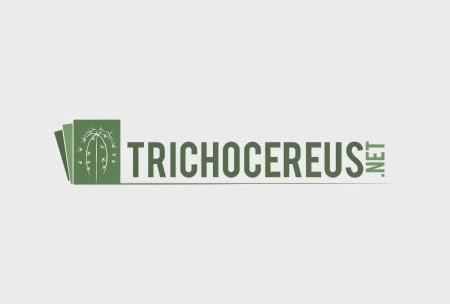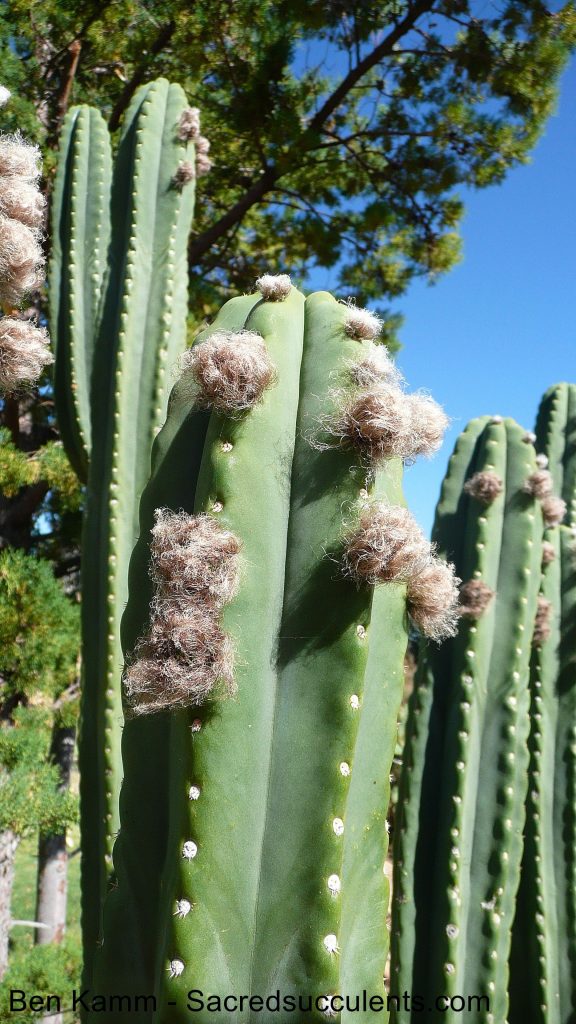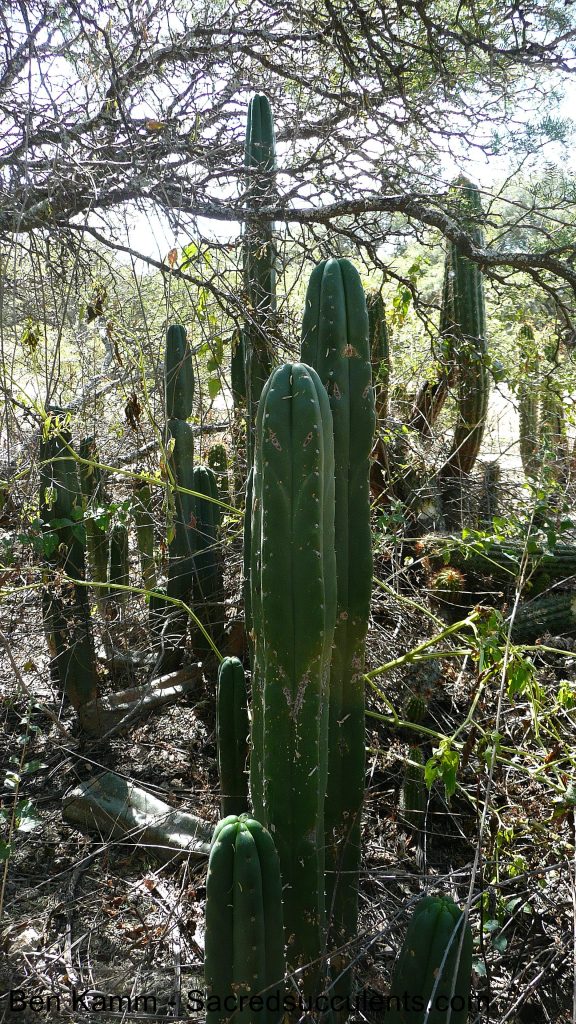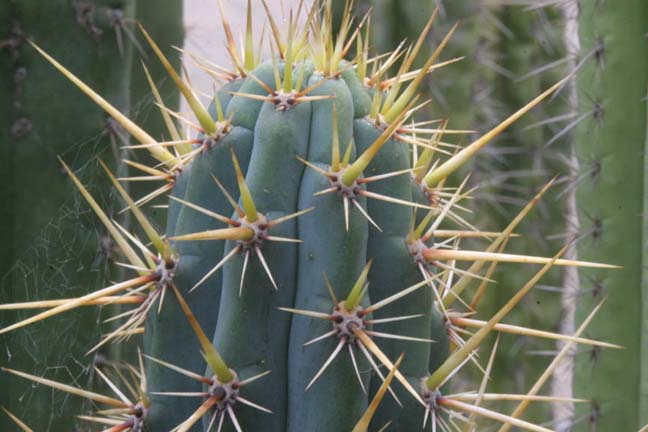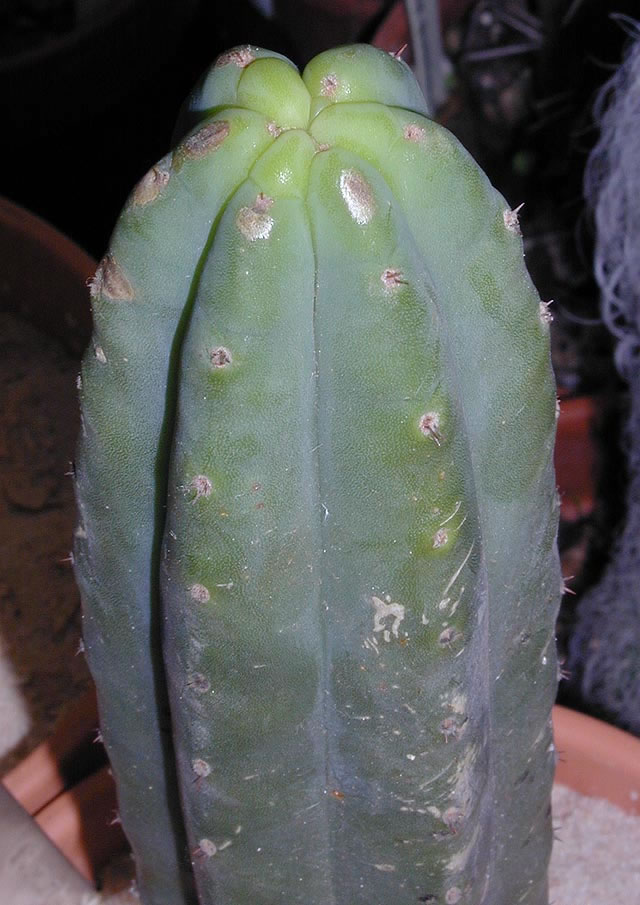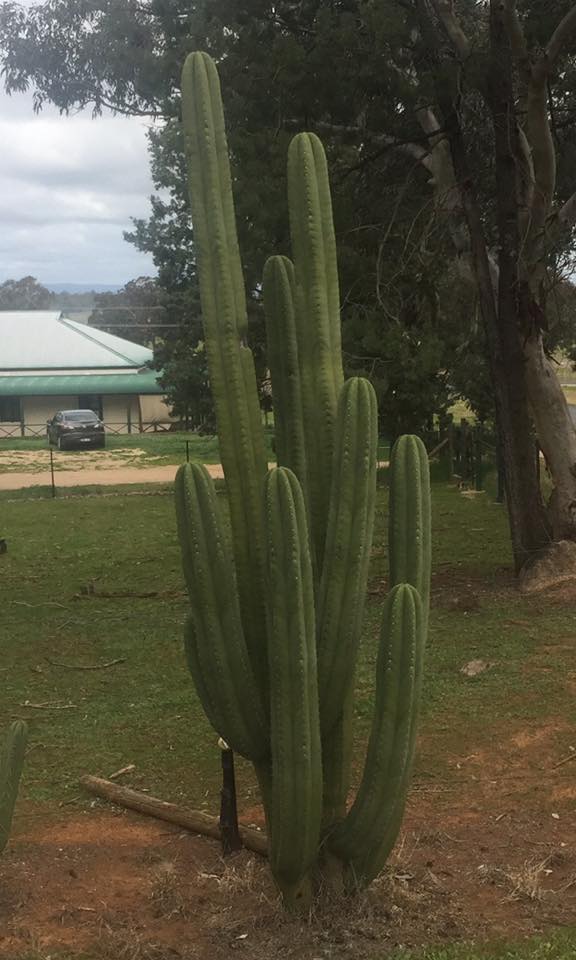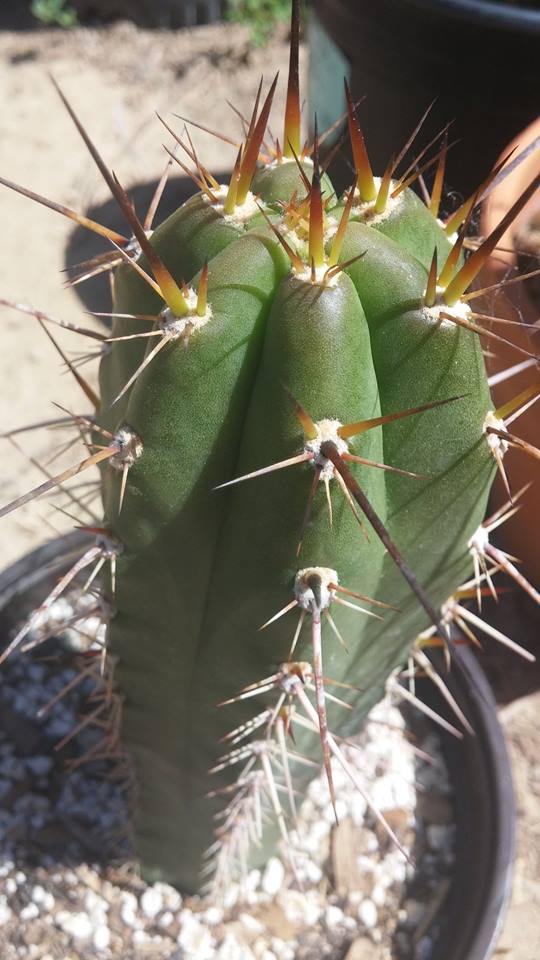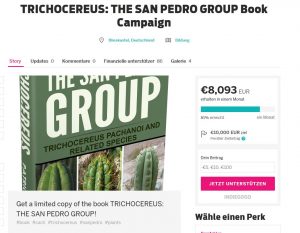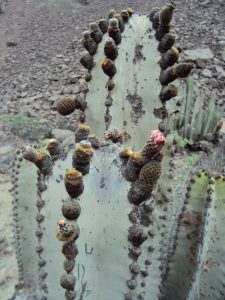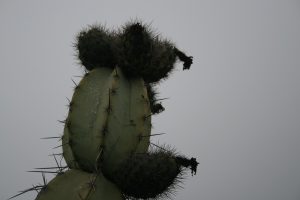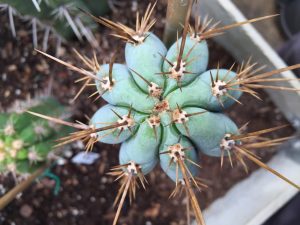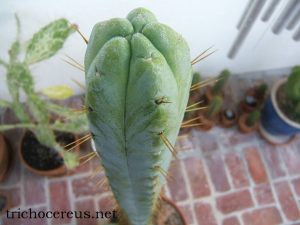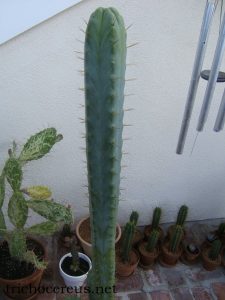Espostoa nana seeds SANTA VALLEY
I have these extremely fresh and viable Espostoa nana seeds from Peru. The viability is great and tested and this is a really rare cactus for your collection.
30 seeds – 3.00 Euro
Those Espostoa nana seeds are ultra fresh and very viable. They are...
Espostoa nana seeds SANTA VALLEY
Dienstag, 26. April 2016
Espostoa nana seeds SANTA VALLEY
Trichocereus terscheckii seeds
Trichocereus terscheckii seeds
Those Trichocereus terscheckii seeds are fresh from 2015 and have a great viability!
30 Seeds – 3.00 Euro
Trichocereus terscheckii is one of the most dominant Trichocereus species of the Andes. The type locality of Trichocereus terscheckii is probably in...
Trichocereus terscheckii seeds
Freitag, 22. April 2016
The PC Trichocereus clone- What the heck?
The PC Trichocereus clone- What the heck?
I wanted to clarify some things about the PC Trichocereus clone. What it is, where it probably is from and what it isnt. The name is probably the most overused name in the history of Trichocereus culture. I personally hate it and spent days discussing...
The PC Trichocereus clone- What the heck?
NL52509a Trichocereus, Potosi, Bolivia
NL52509a Trichocereus, Potosi, Bolivia
NL52509a Trichocereus is a cool and rare Trichocereus species from Potosi in Bolivia. Sacred Succulents Field Trip 2009! Copyright Neil Logan & Sacredsucculents.com!
As far as i know, this one was suspected to be Trichocereus validus. Personally, i think it is Trichocereus tacaquirensis but it´s hard to say just judging by those two pictures. Both plants are definitely similar and if you are interested in seeds of Trichocereus tacaquirensis, check out the new seeds I have in stock!
Trichocereus tacaquirensis Seeds – Buy/For sale
3,00 €
VAT free based on §19 UStG
Versandkosten plus Shipping Costs
Rechtsverbindlich Kaufen / Buy Now
The plants we grew from those seeds looked 100% like a plant from the Tr. taquimbalensis group and it´s a common thing that plants related to Trichocereus taquimbalensis are labeled as Trichocereus validus. That is because Trichocereus validus probably came from Bolivia and both are probably very similar at an older age. At a younger age, that is definitely not the case.
NL52509a Trichocereus, Potosi, Bolivia
Trichocereus Parque de las Leyendas. Peru
Trichocereus in Parque de las Leyendas. Peru
Trichocereus Parque de las Leyendas:
The Parque de las Leyendas is located in the San Miguel district of Lima and was founded as the first Zoo of Peru. Peru is one of the most biologically diverse countries in the world and the park is home to countless amazing plants and creatures, including some interesting Trichocereus species.
There are many cool Trichocereus in the Parque de las Leyendas in Peru. Ben Kamm and his friends from Sacredsucculents.com visited the park during various field trips, collected some seeds and made some photos. Here are some of the pics:
Read the full version of this article here on our site. It has all the photos and we update our articles all the time:
https://trichocereus.net/trichocereus-parque-de-las-leyendas
BK08611.4 Trichocereus pachanoi, Jardin Botanico, Trichocereus Parque de las Leyendas, Lima, Peru
BK08611.5 Trichocereus Parque de las Leyendas, Lima, Peru
Another Trichocereus Pachanoi from the PARQUE DE LAS LEYENDAS in Lima Peru! Same Location, different Plant.
And this is a plant that was grown from the Sacred Succulents Field Trip seed. Copyright: Stillman.
The very long spines are really interesting because they are nothing like the almost spineless appearance of the mother plant. Nonetheless, it´s actually quite common for old plants to be pretty spineless. It´s also interesting because the plant has very few ribs and a large distance between the areoles.
Where to buy seeds or plants of the BK08611.5?: Well, the plant was visited during a field trip and Sacred Succulents sold seeds coming from that plant for a while. So far, the plant shown in the picture above is the only plant I saw so far and it´s definitely very spiny if you compare it with the almost spineless mother plant. Every now and then, someone (mostly from the USA & Australia) is giving away a cutting of this type in our Trichocereus Facebook group, because there were quite a few people who were able to get their hands on seeds. If you are looking for this type, I´d recommend you to send a message to Sacredsucculents.com, because it´s possible they still have some available. Apart from that, you need a lot of luck to find one of them on the open market. But even if you shouldn’t manage to get one, you can get a Trichocereus cordobensis/Super Pedro, which is a very similar type that´s known from Australia. I sometimes have seeds available and if you are interested in getting some, let me know.
BK08611.6 Trichocereus pachanoi, Jardin Botanico, Parque de las Leyendas, Lima, Peru
Trichocereus Parque de las Leyendas. Peru
Trichocereus tarmaensis
Trichocereus tarmaensis Rauh & Backeberg – Deser. Cact. Nov. 20. 1956
Trichocereus tarmaensis is not an accepted species. It was described, but the whole species wasn´t really good to begin with due to the close relationship to Trichocereus cuzcoensis and other species like Tr. ...
Trichocereus tarmaensis
Dienstag, 19. April 2016
Chavín de Huántar: Trichocereus
Chavín de Huántar: Trichocereus
Chavín de Huántar is an archaeological site in Peru with a long history of Trichocereus & San Pedro cultivation. There are plants that can be found within the ruins of Chavin and those plants probably go back for many thousands of years. The ruins are thought to be from 1200BC and the age of this complex is energically discussed among archaeologists.
Chavin is located in the Ancash area and holds great religious as well as historic significance, which is why the center was in the midst of the Chavin culture. Chavín de Huántar is located near the important Peruvian city Lima and lies at the confluence of two large rivers: The Rio Mosnar and the Huanchecsa river. Chavin has a great botanic variety and is home to a large number of different plants and Trichocereus species.
You can find the full version of this article, including the most recent updates and photos here:https://trichocereus.net/chavin-de-huantar-trichocereus-santaensis-el-lanzon
Freitag, 15. April 2016
Trichocereus bridgesii in Bolivia
Trichocereus bridgesii in Bolivia
Trichocereus bridgesii is probably THE dominant Trichocereus species in Bolivia. Yes, there are others but this species pretty much reflects the Bolivian counterpart of the Peruvian San Pedro cactus. The populations usually get up to 4-5 meters tall and form large groups. This plant is probably one of the most drought resistant Trichocereus species, which it manages to survive even the extreme temperatures in the Bolivian desert.
The Californian Nursery Sacredsucculents.com visited some regional populations of Trichocereus bridgesii in their Field Trips and I am extremely glad to have them here on the website. All photos are from Ben Kamm.
You can read the full version of this article on our page. It includes lots of photos:
https://trichocereus.net/echinopsis-lageniformis-trichocereus-bridgesii-bolivia
BK08603.3 Trichocereus bridgesii & BK08603.2 Prosopis alba, Huachjilla
BK08608.2 Trichocereus bridgesii, mutant Achuma, NE La Paz, Bolivia
BK08608.3 Trichocereus bridgesii,NE La Paz, Bolivia
Does Echinopsis pachanoi grow in Bolivia?
Does Echinopsis pachanoi grow in Bolivia?
There are many mentions of Echinopsis pachanoi cactus in Bolivia. But much unlike popular belief, most of those plants are actually spineless varieties of Trichocereus bridgesii. Though both species can be very similar under certain conditions, you definitely see the difference on flowering plants. Echinopsis pachanoi often has brown or black hairs on the flowers, while the hairs on the Bolivian species are often white. This is not always the case, but sometimes.
Here are some of the Bolivian Trichocereus populations that were visited during Sacred Succulents´Field Trips. Most of the plants are labeled Trichocereus aff. pachanoi, what stands for „affinity to Trichocereus pachanoi“. That means that those plants look similar to Trichocereus pachanoi, while they probably are more closely related to Trichocereus bridgesii. Don´t forget that Echinopsis pachanoi is widely cultivated in every South American country today. It´s just that the Bolivian version of it is Trichocereus bridgesii. It is sometimes called Cactus of the four winds. The latter has become a catchy marketing phrase for everything that has four ribs, but that has more to do with marketing than ancient history. Nonetheless, this phrase has been used for a four-ribbed Bridgesii type. With that said, many plants can temporarily have four ribs, but usually grow some later on.
Here I will show some photos from the Sacred Succulents Field Trips from Bolivia. All those pics are from Ben Kamm and Sacredsucculents.com. Please support them to make more Field Trips like those possible!
Check out the full article with photos here: Echinopsis pachanoi in Bolivia
BK10512.11 Trichocereus aff. pachanoi, near Cuchucunata, Cochabamba, Bolivia
Trichocereus aff. pachanoi, Arani, Cochabamba, Bolivia
BK10508.5 T. aff. pachanoi, Tiatako, Cochabamba, Bolivia
Another version of the San Pedro cactus in Bolivia. This one is the most interesting, because it might actually be a relative of Trichocereus scopulicola. But I would need to take a closer look at the rest of the plants. On the second pic, the ribs look very much like the ribs on a Trichocereus scopulicola.
BK10508.1 Trichocereus aff. pachanoi, Cerro San Pedro, Cochabamba, Bolivia 2010
Trichocereus bridgesii, Martin Cardenas Botanical Garden, Cochabamba, Bolivia 2010
Trichocereus aff. pachanoi, Martin Cardenas Botanical Garden Cochabamba, Bolivia 2010
Trichocereus species in Martin Cardenas Botanical Garden Cochabamba, Bolivia
Various populations of Trichocereus santaensis
Various populations of Trichocereus santaensis
There are various populations of Trichocereus santaensis. The species originally occurs in the Santa Valley. It is HUGE and it covers and borders other historic cities like Huaraz, Olleros, Ancash and many more. In those regions, you can sometimes find this rare gem labeled as Trichocereus pachanoi or simply SAN PEDRO.
During the Sacred Succulents Field Trips, they visited various populations of Trichocereus santaensis and I want to combine them here on this page.
BK09511.7 Trichocerus santaensis, Rio Santa, Ancash, Peru
This one was visited during the 2009 Field Trip. Near Rio Santa, Ancash, Peru. Pic: Ben Kamm, Sacredsucculents.com! Support them to ensure their survival so they can go on more Field Trips in the future!
It is a super interesting plant that has the typical discoloration of the skin that this species is known for. Werner Rauh particularly mentioned it in his original description. This is probably the archetype of this species. But there are more and the variation among the other related types is HUGE.-Some have longer spines, while some others look more like typical Pachanois. When dealing with Pachanois from Huaraz, it´s sometimes not easy to keep them apart from this species and some people do not differentiate between the two.
BK09509.10 Trichocereus santaensis, Rio Santa near Olleros, Ancash
Another Pic from the same Location as BK09509.9 but different Plant near Olleros. Which is a hotspot for this rare Trichocereus. If you come across plants from this area, it´s probably Trichocereus santaensis. Note the weird spination which is really typical for this species. And once again, the discoloration of the skin.
BK09509.9 Trichocereus santaensis, Rio Santa near Olleros, Ancash, Peru
Another very cool and rare Trichocereus from the sacred Succulents 2009 Field Trip. A large population growing besides the Rio Santa, near Olleros, Ancash, Peru!
Trichocereus santaensis, north of Caraz, Ancash, Peru
Another local poulation of the same species. This time north of caraz, Ancash, Peru.
Various populations of Trichocereus santaensis
Trichocereus peruvianus from Matucana
Trichocereus peruvianus from Matucana
Trichocereus peruvianus from Matucana is one of the most sought after types. Matucana is the type locality of Trichocereus peruvianus, which means that in Matucana you can find the most typical plants according to the description. The description was originally made by the Americans Britton & Rose, and the described a plant that must have been somewhere between Trichocereus peruvianus and Trichocereus cuzcoensis. And yes, Trichocereus cuzcoensis plays a part in the history of Trichocereus peruvianus as well. Both are so closely related and exist with many intermediate forms in between that Britton & Rose´s decision to keep them separated from each other was not regarded without criticism.
One of the most typical Matucana Peruvianus types is the ICARO DNA Peruvianus. Icaro Dna made a name for themselves providing great quality seeds that are probably as true as it gets to the original description. To me, when I hear the name MATUCANA, I think of this remarkable type.
Some more Matucana Peruvianus types are the LOS GENTILES Peruvanus from Sacred Succulents and my own Matucana Peruvianus in my shop! Sorry for the promo, but it´s super high quality seeds that you will love!
But now back to the Matucana Perus. Sacred Succulents had the great luck to visit some of them during their South America Field Trips. Here are some of them:
Trichocereus peruvianus, Matucana, Peru
Trichocereus Peruvianus without a field number. Again in Matucana Peru. Very cool Glauceous Tricho, similar to the cultivar Trichocereus Rosei or Trichocereus Glaucus. Pic: Ben Kamm, Sacredsucculents.com! Please support them because they are awesome!
BK08612.4-A Trichocereus peruvianus, Matucana, Peru
Another frosted Peruvianus from the Location in Matucana. Very similar to the Plants that are labeled „Trichocereus Rosei“. Or Trichocerus Glaucus! Pic: Ben Kamm, Sacredsucculents.com!
Another type that is believed to be a Matucana type is the Australian Trichocereus rosei clone. It´s fabulous and one of my absolute favorites. Rosei 2 is DEFINITELY a Matucana…and Rosei 1 most likely. The alternative would be that it comes from Rimac, but I want to show it here too!
This is Rosei 2, just for comparisons:
Some of those plants are sometimes called Trichocereus santaensis, but those are usually thinner and overall closer to Trichocereus pachanoi or sometimes even Trichocereus bridgesii than they are to Trichocereus peruvianus.
Well, that was one of the more typical Trichocereus peruvianus from Matucana. This city in Peru is one of the historic cactus sites, especially for the species Trichocereus peruvianus. Matucana is the type locality of Trichocereus peruvianus, which means that in Matucana you can find the most typical plants. But there is more; many many plants with cuzcoensis genetics. For example, KK242 is from Matucana too! And due to the high number of intermediates between Trichocereus cuzcoensis and Trichocereus peruvianus, it´s sometimes not easy to draw a firm line between them.
This photo shows a fairly typical KK242 from Matucana. The photo comes from K.Trout and his website troutsnotes.com.
And now compare this to this other plant from Matucana:
It´s funny…but that one was sold as KK242 from Matucana too. Just to give you an understanding of what is actually out there.
Various Trichocereus Species from the Sacred Succulents Trips
Various Trichocereus Species from the Sacred Succulents Trips
On this page, I want to show some of the plants that my friends from Sacred Succulents visited during their Field Trips. I had those listed as separate pages, but it made the whole process to look at them a bit complicated. And that´s why I brought some of the species on one page. On this page, you can see some Trichocereus cuzcoensis, Trichocereus bridgesii, Trichocereus peruvianus and others.
BK08519.4 Trichocereus cuzcoensis, Pisac
This plant was visited during the 2008 Sacredsucculents Field Trip. It´s a beautiful Cuzcoensis that partially grows creeping. For some types of Trichocereus cuzcoensis and Trichocereus peruvianus, it´s definitely common that they can lean over and grow hanging down rocky slopes and cliffs. This Trichocereus cuzcoensis from Pisac is relatively typical Cuzcoensis that is not unlike the so well known and widely distributed KK242.
Ben from Sacred Succulents gave away a very limited amount of seeds to people who supported the Sacred Succulenst Field Trips with seed shares and this was one of them.
BK08521.12 Trichocereus cuzcoenis, Ollantaytambo
This one is another rather typical cuzcoensis, but that shows slight variation to what we usually know. This is a plant that is unlike the typical KK242, but which shows relationship to plants like the amazing cuzcos from the Bolivian Isla Del Sol. Definitely an amazing plant!
BK08526.4 Trichocereus cuzcoensis, Peru
I will add more Info about this Plant soon. It is a plant that was visited during the Sacred Succulents Field Trips. Picture by Ben Kamm from sacredsucculents.com!
Trichocereus cuzcoensis, Lamay, Cusco, Peru 2010 copyright B. Kamm
First One from the 2010 Sacred Succulents Field Trip! Trichocereus Cuzcoensis in Lamay, Cusco, Peru. Pic: Ben Kamm, Sacredsucculents.com
BK08526.11 Trichocereus cuzcoensis, Raqchi
I will add more Info about this Plant soon. It is a plant that was visited during the Sacred Succulents Field Trips. Picture by Ben Kamm from sacredsucculents.com!
BK08612.9 Trichocereus peruvianus, Sucro, Peru
Trichocereus Pervianus from Sucro! Pic: Ben Kamm, Sacredsucculents.com!
Trichocereus Bridgesii Mutant Achuma, above Huachjilla, La Paz, Bolivia 2010
One of the coolest Plants I ever saw! A mutated Trichocereus Bridgesii growing above Huachjilla, La Paz, Bolivia. Pic: Ben Kamm, Sacredsucculents.com
Trichocereus bridgesii-baby Achuma, above Huachjilla, La Paz, Bolivia
Another very small Baby Bridgesii from La Paz. Taken during the 2010 Sacred Succulents Field Trip! Pic: Ben Kamm, Sacredsucculents
Trichocereus peruvianus, Fortaleza Canyon, Ancash, Peru
A very cool Peruvianus from the FORTALEZA CANYON in Ancash, Peru. Ben Kamm
Trichocereus seedling, Sedum, Peperomia, Chavin, Ancash, Peru
Another small Peruvianus Seedling, growing in relationship with Peperomia and Sedum. Pic: Ben Kamm, Sacredsucculents.com.
Trichocereus peruvianus baby, Huariquina. Lima, Peru
Another Pic from the Sacred Succulents 2009 Field Trip! Pic: Ben Kamm, Sacredsucculents.com!
BK08526.12 Trichocereus cuzcoensis, Raqchi
I will add more Info about this Plant soon. It is a plant that was visited during the Sacred Succulents Field Trips. Picture by Ben Kamm from sacredsucculents.com!
BK08608.4 Trichocereus bridgesii, El Vergel, La Paz, Bolivia
Another Bridgesii from La Paz, Bolivia. Pic: Ben Kamm, sacredsucculents.com. More text will follow soon.
Various Trichocereus Species from the Sacred Succulents Trips
Mittwoch, 13. April 2016
Trichocereus peruvianus MATUCANA buy 100 seeds
Read more about Trichocereus peruvianus from Matucana, also known as Echinopsis peruviana from Matucana:Icaro DNA Trichocereus peruvianus
Trichocereus cordobensis (Scopulicola) 100 seeds
Trichocereus cordobensis (Scopulicola) 100 seeds
Trichocereus cordobensis is an extremely interesting plant that probably belongs into the range of the species Trichocereus scopulicola. This species is very rare in nature and there only were a few collections of it. When Friedrich Ritter discovered the species Trichocereus scopulicola, he labeled his collection FR991 and almost all Scops on the market go back to that one collection in the 50s. Now back to Trichocereus cordobensis. It is not an accepted name and there is not a description for it. The city Cordoba is in Argentina, which is far way from Bolivia where Trichocereus scopulicola is endemic. It probably came from an institution called NMCR, which distributed seeds and cacti in the past 20 years. They are the source of many interesting plants, including one very spiny type of Scop that was not identical with Ritter´s original FR991. And that is probably the original source of this plant.
Those seeds here are from an open pollinated fruit on one of those „spiny scops“. The father were probably the Australian hybrid Rosei or a Trichocereus bridgesii that was flowering at the same time. The seeds are extremely clean and viable. Up until now, I did not offer this type in quantities over 30 seeds and this is the first time I have it in stock. There only are a few hundred seeds left and I do not believe I will get fresh ones again. Get it as long as they are there. This is the first time in ages that this plant is available for sale and I am super happy I can offer it. The whole plant is definitely a Scop and I verified this by checking out the flower. It is not just a fat Pachanoi or just a weird plant.
Trichocereus cordobensis (Scopulicola) 100 seeds
Trichocereus peruvianus RIO LURIN

Trichocereus tulhuayacensis Buy Bulk 100 Seeds
Trichocereus tulhuayacensis Buy Bulk 100 Seeds
100 Seeds – 9.00 Euro
This product is the same as the other Trichocereus tulhuayacensis products. Just in 100s quantity with a better price to make sure you get more seedlings! Trichocereus tulhuayacensis only grows on one site in Huachac. The location is close to the one of KK338 Trichocereus peruvianus and the whole plant is somewhere between Trichocereus cuzcoensis and Trichocereus peruvianus.
This is KK337 Trichocereus tulhuayacensis and the seeds are nursery produced and not from nature. KK337 comes in two different types. One with a white flower and one with a red one. I am not sure which one it is, so I am offering this explicitely as the white flowering variety to make sure there are no bad surprises when they flower. It´s an amazingly rare species and I am extremely happy to have it in the shop. The seeds are ultra viable and I nearly had a 100 percent germination rate in my germination tests. When buying those seeds, you buy a great quality for a great price. I had no problems with rot or fungal infections and the seeds are super clean.
Dienstag, 12. April 2016
Trichocereus tulhuayacensis Bulk Seeds 1000 Seeds
Trichocereus tulhuayacensis Bulk Seeds 1.000 Seeds
Trichocereus tulhuayacensis always was the holy grail of all the Trichocereus species. It only grows at one location in Huachac, and was totally unavailable in the past years. Sacred Succulents has a plant in stock, but as an international customer it was not possible for me to import it. This year was the first year that I was able to buy seeds of this extremely rare species.
So far, there is only little i can tell you about it, other than that I bought it KK337 Trichocereus tulhuayacensis. The species usually has a pink flower, but there also are white flowering plants at the original site in Huachac and right now I do not know which one of the two possibilities it is. We are currently making some seedling grafts to verify the ID and as soon as we have our first results we will share them here with you. Right now, I can´t guarantee that those will have a pink flower and I offer them as white flowering just to be sure.
The quality of the seeds is ultra-high quality. My germination tests were amazing and I almost had 90-100% germinate rate. It honestly couldnt be any better. The seeds were very well cleaned and I had absolutely no issues with rot or fungus.
Those seeds were not taken from nature. They are nursery produced by a breeder who originally got his plants from Knize, who offered KK337 as KK337 var. rubriflorus and KK337 var. albiflora. The plants that were shown to me definitely fit the description of this species.
Do you want buy other Trichocereus & San Pedro Seeds? Check out all the products in the shop!
Ihr möchtet Trichocereus Samen kaufen? Ihr findet eine Menge weitere Arten im Shop!
Trichocereus tulhuayacensis Bulk Seeds 1000 Seeds
Trichocereus peruvianus Intermediate

Read about our Trichocereus peruvianus database page with all the necessary info on this beautiful species. We do not sell any seeds though.
Montag, 11. April 2016
Trichocereus Crowdfunding Success!!
Trichocereus Crowdfunding Success!!
Hi guys, it´s been one month since I started the crowdfunding campaign for my book TRICHOCEREUS: THE SAN PEDRO GROUP and it´s been a wild success! Though there is still one month to go, the campaign already reached more than 80% on Indiegogo…and I wanted to thank you all for that! I draw my hat to everyone who bought a book, donated or shared the link in his Facebook profile. Thank you all for making the past month one of the best months in my life!
With that said, the campaign has not officially reached the goal of 10.000 Euro yet, so please check out our campaign on Indiegogo and buy a copy of this extremely limited book! Also feel free to share our link with your friends!
TRICHOCEREUS: THE SAN PEDRO GROUP: https://igg.me/at/2h2Jsr6XawQ/x/13533390
There is also a hardcover Connoisseur edition that is made using the thread stitching technique to make sure your book looks amazing. But don´t get me wrong; the standard edition of my book has a great quality as well. I made sure of that and the whole book will be FULL COLOR. I actually wanted to stop at 300 pages because the costs are substantial, but I just want to make the best book possible and now you will get a book that has 350 – 400 pages!
Let me just give you some info on the content. The whole book is NOT a cheap attempt to grab some money, but a really professional collection of original descriptions and photos showing rare Trichocereus species in their natural habitats. Almost all photos show adult plants in nature, including extremely detailed flower pics and comparisons.
It contains all the rare species that were originally described and fills that up with detailed information about the situation and the climate in the habitats and shows how to tell those rare species apart.
There are never before seen photos from all kinds of South America Field Trips, including photos of Trichocereus santaensis, Trichocereus knuthianus, Trichocereus schoenii, Trichocereus bridgesii, Trichocereus cuzcoensis and so many more.
There are separate chapters of historic sites like Chavin De Huantar, the Isla Del Sol, Cusco and many other places that are known for their breathtaking Trichocereus populations. It also has separate chapters about the San Pedro cactus in Bolivia, Chile and its original type locality in Ecuador.
So long story short, this book is serious business and a good read! It´s about nothing but botanic and taxonomic facts and does NOT contain anything about borderline legal stuff like cactus ingestion and stuff like that. I want you to know that this is not a book that you need to hide on your bookshelf.
TRICHOCEREUS: THE SAN PEDRO GROUP is available exclusively through this campaign and is only available in a very limited crowdfunding edition. This is NOT a risky crowdfunding campaign and this book WILL BE PUBLISHED. Don´t miss out on it, because you will absolutely love this book and regret it if you don´t get yourself a copy. There only are about 400 books available through the campaign and almost half of them are already sold out! This campaign goes into its final month and I guess you could call it a mid season Finale. I know that it´s not exactly cheap, but all the money goes directly into the quality of the printing and is not made to grab some cash.
So yeah, get it while you still can! Let´s get this baby printed!
https://igg.me/at/2h2Jsr6XawQ/x/13533390
Trichocereus Crowdfunding Success!!
Montag, 4. April 2016
Neoraimondia roseiflora (Lima, Peru) -Buy Seeds
Neoraimondia roseiflora (Lima, Peru) -Buy Seeds
30 seeds – 3.00 Euro
The genus NEORAIMONDIA was described by Britton & Rose in 1920. They are endemic to Bolivia and Peru and this is one of the nicest Neoraimdonia species that we know. Neoraimdonia roseiflora is pinkish flowers and always was a species that was the source for debates between collectors like Friedrich Ritter or Curt Backeberg. The species is extremely variable and the overall appearance and the rib count differs greatly depending on the location.
The species name Neoraimondia roseiflora was described by Backeberg and Rauh and the plant is really close to Neoraimondia arequipensis. This is a really rare plant and I am very happy that i can offer it here in my shop.
Those Neoraimdonia roseiflora seeds are fresh, highly viable and tested. The seeds are nursery produced from Lima and were not stolen from nature.
If you want to buy seeds of other cacti or Neoraimondia species, feel free to send me a message.
CITES: Neoraimdonia roseiflora is CITES 2, what means it is legal to import seeds into most countries. But make sure to check your regional import laws to be on the safe side.
Neoraimondia roseiflora (Lima, Peru) -Buy Seeds
Armatocereus matucanensis - Buy Seeds
Armatocereus matucanensis – Buy Seeds
15s – 3.00 Euro
Armatocereus matucanensis is a columnar cactus from the Peruvian city Matucana. It is extremely rare in European collections and I am extremely happy that I can offer you some VERY viable seeds with almost 100% viability rate! Armatocereus seeds are larger than most other cactus seeds.
Those seeds are nursery produced seeds from Lima and the quality is excellent. The genus Armatocereus is endemic in Venezuela, Columbia and Peru and is known for the segregated growth that constantly terminates and pups again. It´s a well known trait that all Armatocereus species have in common and those plants are a lot of fun. Armatocereus is also a great grafting stock, similar to plants from Trichocereus or Cereus genera.
If you are interested in buying other Armatocereus species seeds, write me an email and I´ll send you the newest stock updates.
CITES & Import Questions: Those seeds are CITES 2 and it should be not a problem to import them into most countries unless there are certain import restrictions. Plants from the genus Armatocereus cannot be imported into Australia because they are prohibited as a weed.
Armatocereus matucanensis - Buy Seeds
Freitag, 1. April 2016
SS01 (Trichocereus peruvianus)
SS01 (Trichocereus peruvianus)
The SS01 clone was brought into cultivation by Sacred Succulents. It is one of their oldest clones, going back many years and the number of hybrids that involves it is really high. It actually is a very blue Trichocereus that would usually be called Tr. peruvianus or Tr. macrogonus outside the SS nursery. The origin of this plant is unknown, but because of Sacred Succulent´s constant work with this clone, it is widely distributed.
Here is an excerpt from the Sacred Succulents description of SS01:
SS01 (Trichocereus peruvianus or Trichocereus macrogonus)
Columnar cactus up to 8´+ tall. Fat blue-green stems up to 6″ in diameter and 2″+ spines. Huge white nocturnal flowers. Can grow very fast; up to several feet a year. Tends to grow prostrate with age. We believe this to be a clone of either Trichocereus macrogonus or Trichocereus peruvianus. Cold hardy to 25° Fahrenheit.
My personal impression of this plant is that it is one of the plants that were originally sold by Karel Knize. Those were really common at the time this clone showed up and I would not be surprised if it was one of them.
Sacred Succulents used this clone to create many hybrids, such as SS01 x Tr. pachanoi, SS01 x BBG, SS01 x Tom Juul´s Giant, SS01 x SS02 and many more. If you want to buy some seeds or cuttings of Trichocereus SS01, check out the Sacred Succulents website.
Those photos show the SS01 clone and are not hybrids. I will have a huge number of SS01 hybrid pics in my upcoming book SAN PEDRO HYBRIDS, which will be out in 2017.
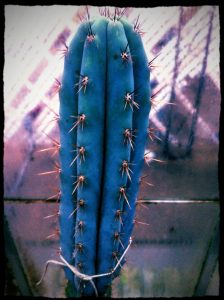
SS01 (Trichocereus peruvianus)
SS02 (Trichocereus bridgesii)
SS02 (Trichocereus bridgesii)
SS02 stands for a certain clone brought into cultivation by Ben Kamm & his nursery Sacred Succulents. It is a relatively short-spined Trichocereus bridgesii that is known to produce some mind-boggling offspring. Most of the hybrids produced with this plants do not look like a standard Bridgesii and due to the fact that Sacred Succulents has been offering them for years, there is a huge number of different SS02 Hybrids available.
Here is an excerpt of Sacred Succulent´s description of their SS02:
Dense candelabra stands to 16´tall. Blue/green frosted stems up to 5″ in diameter with 5 – 7 ribs. Each areole bears 2 – 4 central spines up to 1.5″ long. White nocturnal flowers. The new growth on old stemps is often spineless. A distinct form of Trichocereus bridgesii. Cold hardy to 25° Fahrenheit.
The Pictures of the SS02 clone were provided from Nitrogen!
And here are some hybrids that were created with the SS02 clone! If you want to some cuttings or seeds of the SS02, check out the Sacred Succulents website and ask for their seed list. There will be more SS02 hybrids to be seen in my upcoming book SAN PEDRO HYBRIDS.
(SS02 x Tr. peruvianus) x Tom Juul´s Giant / Photo: Noah Reams

(SS02 x Tom Juul´s Giant) x Tr. peruvianus / Photo: Noah Reams
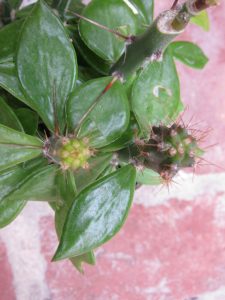
Left: (SS02 x pachanoi) x TPM Right: TPM x SS02
Sacred Succulents used the SS02 to produce an endless list of great hybrids. Some of those are:
SS02 x SS01, SS02 x Trichocereus pachanoi, SS02 x Huancabamba, SS02 x BBG, SS02 x Luther Burbank, and many more. Apart from Sacred Succulents, the SS02 is used bymany other breeders, such as Misplant, Cactusaffinity.com and many more.
SS02 (Trichocereus bridgesii)
